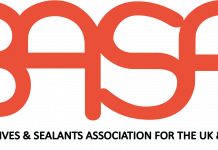Tara Conley, Global Director of Regulatory Affairs, Microban International, discusses how global regulations impact antimicrobial development, and the implications for chemical manufacturers.
Microbial growth on products and substances can result in a plethora of challenges – such as staining, odours and biodegradation – that are difficult to tackle without addressing the cause. For example, mould is a recurrent problem in damp environments – especially bathrooms and kitchens – leading to end-users disposing of and replacing products prematurely. In addition, the global pandemic has really shone a light on the concept of cleanliness, with many consumers expressing concerns about visiting businesses, travelling on public transport or reusing products perceived as unhygienic.
A lasting benefit
Tackling microbes can be costly for both consumers and the environment. This is driving the market for built-in antimicrobial technologies and coatings, a sector which is expected to soar by 7.1% CAGR from 2021-2030.1 Antimicrobials can help combat the multitude of problems associated with microbial growth, so it is no wonder that these technologies have been adopted for various applications, from activewear to medical equipment. One recent study found that 64 percent of consumers are now willing to spend more on goods with built-in antimicrobial product protection,2 so integrating these technologies into products can undoubtedly provide a competitive edge for chemical manufacturers and retailers. Antimicrobials work to destroy or inhibit the growth or reproduction of a broad spectrum of microorganisms, including bacteria, fungi and moulds, and can be incorporated into a variety of materials, either directly into the chemical formulation during manufacture or applied on surfaces to provide a protective layer.
Biocidal regulations
Antimicrobials are becoming hot commodities in many industries but, before investing, it is important for manufacturers to only partner with a trusted antimicrobial company with the experience to provide efficacious and trusted technologies. Antimicrobials are tightly regulated by national governing bodies such as the Biocidal Product Registration (BPR) in Europe and the Environmental Protection Agency (EPA) in the USA. These organisations control the type of application for which each antimicrobial product can be used, set levels for acceptable use in those applications, and provide parameters to ensure consistent marketing of these technologies to avoid them being misused or mis-sold. Biocide regulations – as with any industrial chemicals regulations – are frequently reviewed and updated based on new scientific research and, with new greener technologies on the horizon, it is important to keep up to date with changes that could impact the antimicrobials market. Fortunately, partnering with a trusted additives provider can help to make light work of navigating these regulatory guidelines, as they are able to offer advice on how to correctly manufacture, market and sell antimicrobial products and articles treated with antimicrobial additives.
What to look for when choosing an antimicrobial partner
An antimicrobial company should be able to navigate the regulatory landscapes necessary to bring effective products to the market. This can mean registering and defending the active chemistries or biocidal products under these regulatory regimes. The antimicrobials provider should do this by providing supporting environmental and human health information to demonstrate that the chemistries can be used safely by manufacturers and consumers, and shepherding the registrations through to completion to allow products to be sold, used and distributed.
Demonstrating the need for antimicrobials
An antimicrobials provider should also demonstrate the need and efficacy of their technologies for different applications. Some companies have touted materials such as PVC or vinyl as having a natural tendency to ward off microbes, suggesting that the use of antimicrobials may be unnecessary. However, no surface is completely resistant to microbial adhesion; even inert plastics can harbour germs and allow biofilm formation. These materials are not recognised as biocides by regulatory bodies and therefore companies must be very careful in their marketing of these materials, since claims of antimicrobial efficacy may be construed as biocidal claims requiring registration of those chemistries. Also, while it may be true that certain surfaces – such as those that are rougher, hydrophobic, rich in nutrients or coated by surface conditioning films – may succumb to microbial contamination more readily, it is also dependent on the type of organism, the application for the surface, and the size of the initial colony of organism. Instead, the addition of established antimicrobial technologies can ensure that these materials are protected from the growth of microbes.
Antiviral claims
Regulatory requirements around antimicrobials have come to the forefront during the pandemic, as seen not only by the number of antiviral products on the market, but also by the number of enforcement actions taken against companies making unsubstantiated or egregious claims at a time of heightened consumer concern. Even with expedited reviews to address emergency use of antiviral technologies, providers of such technologies still needed to generate data showing antiviral and antimicrobial efficacy, and in some cases, undertake robust product registrations to bring those products to market.
It is also important to note that WHO recommendations state that the best way to prevent the spread of viruses between surfaces is to clean and disinfect them.3 Antimicrobial technologies are not intended to replace these cleaning practices – and should not be marketed as such – but rather supplement them by keeping exposed surfaces cleaner in between cleans, cumulatively reducing the viral load and growth of microbial contaminants.
A push for sustainability and safety
Part of the registration process for any antimicrobial additive at the national level is a review of the environmental impacts of that chemistry, including potential contributions to pollution or their ability to bioaccumulate in the food chain. Regulatory agencies evaluate the environmental and human health profiles of the additives with respect to their use and manufacture, and certifications from organisations such as bluesign® for textiles also identify environmentally preferred solutions. The best antimicrobials providers are those that are forward-thinking and committed to sustainability, and supply additives with minimal environmental and human health impacts. As the world shifts towards sustainability, green initiatives and combating climate change and unnecessary waste, choosing environmentally friendlier chemistries can effectively support these objectives.
Summary
Built-in antimicrobial technologies and coatings can provide significant benefits for many products, and chemical manufacturers should focus on scientifically proven chemistries that have been effectively tested and reviewed for safety and efficacy. Partnering with a leading antimicrobial additives company that understands and remains current and compliant with relevant regulatory guidance is the best way for manufacturers to ensure that antimicrobial-treated products are designed and marketed correctly in their region of sale.
References
1. Allied Market Research (2021). Antimicrobial Additives Market Drivers, Trends | Analysis 2030. Retrieved 17 June 2022, from https://www.alliedmarketresearch.com/antimicrobial-additives-market
2. Multi-sponsor surveys. (2020). Antibacterial Products Study
3. World Health Organization. (2022) Coronavirus disease (COVID-19): Cleaning and disinfecting surfaces in non-health care settings. Retrieved 17 June 2022, from https://www.who.int/news-room/questions-and-answers/item/coronavirus-disease-covid-19-cleaning-and-disinfecting-surfaces-in-non-health-care-settings









